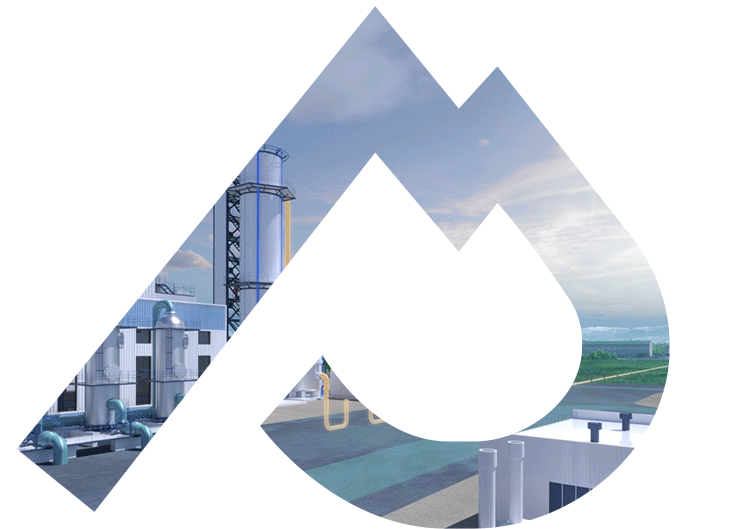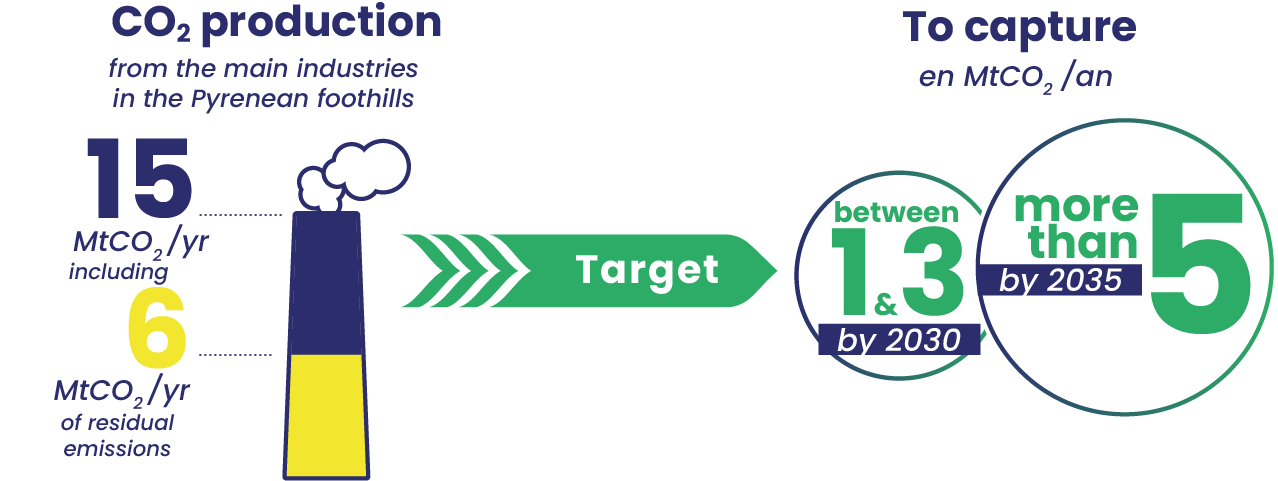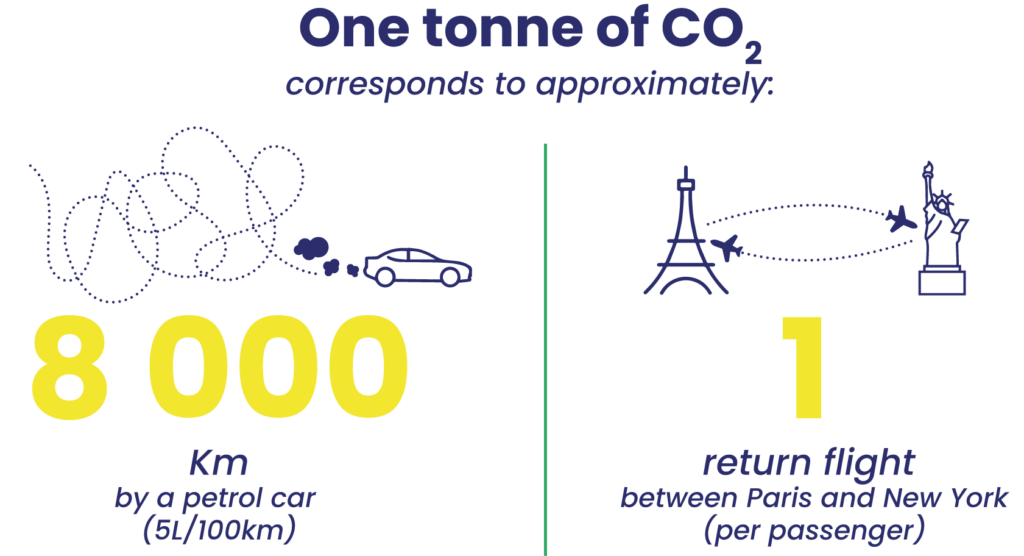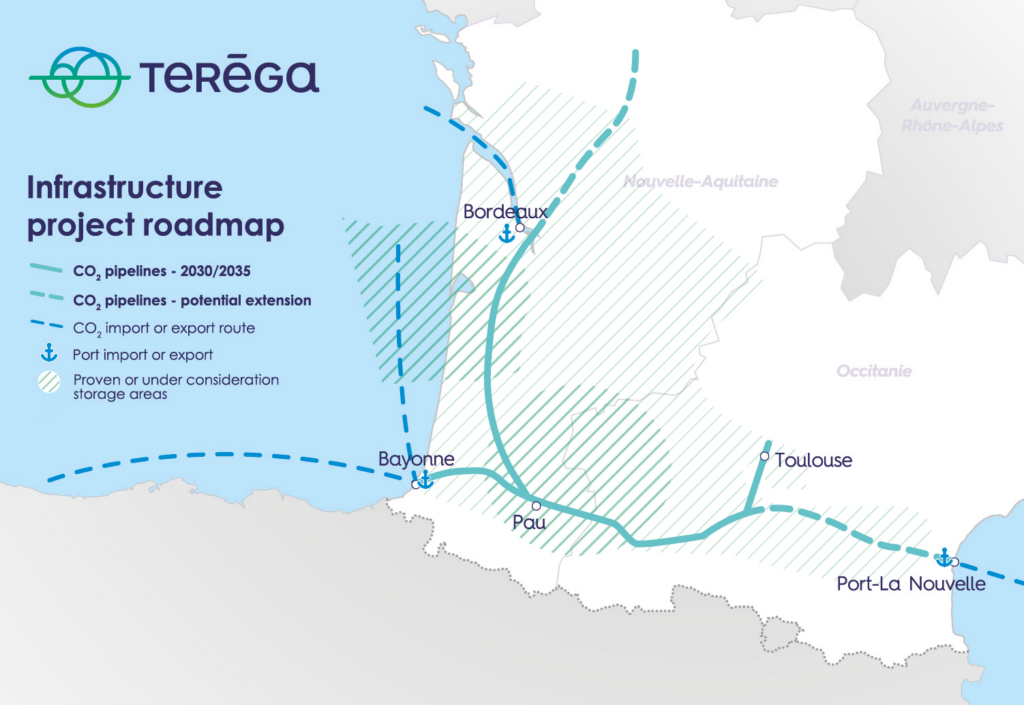
Pycasso :
a CCUS project
for carbon neutrality
in industry
Key points of the Pycasso project
A project to meet European neutrality expectations
The Pycasso project (Pyrenean CO2 Abatement through Sustainable Sequestration Operation) fits into the European Union’s environmental ambitions (Green Pact for Europe adopted in 2020) and its target of becoming the first climate-neutral continent. It is a response to recommendations from the IPCC (Intergovernmental Panel on Climate Change) on the theme of reducing residual CO2 emissions from industrial activities.
A target objective for decarbonisation
The Pycasso project offers a solution for invigorating the territory’s industrial transition. The processing of residual CO2 is the final stage of reducing greenhouse gas (GHG) emissions in industry. It only covers the incompressible emissions produced by industrial processes once other actions such as energy frugality and efficiency, plus the integration of renewable energies, have been implemented. This applies primarily to heavy industries such as iron and steel or cement production, for example.
This is the portion of carbon dioxide that remains in the discharged fumes, after decarbonisation of the various phases of the production process: plant modernisation, cleaner energy supplies, and the overhaul of production processes.

Values for comparison :

With the Pycasso project, an amount equivalent to the GHG emissions of nine cities comparable to inner Pau will be processed every year.
Resources developed by the Pycasso project
To decarbonise industry in the Pyrenean foothills, the Pycasso cross-border project proposes to cover the entire CCUS chain (CO2 Capture, Utilisation and Storage).
The programme will extend from the capture of residual CO2 and that produced by major producers in the Southwest, to its storage or utilisation, including its transport from the source of the emissions to the final destination.
The main aim of the Pycasso project is geological storage, through the re-use of depleted oil and gas fields in the territory, thus offering a much more economical alternative to the North Sea storage which is most frequently used at present.
The birth of the Pycasso project in the Pyrenean foothills
It is the result of a joint study, initiated by the Avenia competitive cluster, bringing together more than 200 members from the South-West in the energy and environmental sectors. Launched at the start of 2021, Pycasso is a large-scale project bringing together about thirty industrial and institutional actors.
The choice of the Pyrenean foothills was quite deliberate, satisfying the requirements of secure long-term sequestration of captured carbon. Identified as the French site with the greatest geological CO2 storage potential, it could offer the State its sovereignty, in a virtuous rehabilitation movement. The now-depleted deposits in this geographical area, which were massively exploited during the 1950s and 60s for their natural gas resources (to near total exhaustion), account for 70% of the country’s safe and sustainable underground CO2 storage capacity.
On the completion of the first studies, it was recognised that the Pyrenean foothills are the only region capable of developing a high-capacity CO2 storage programme in France by 2030.
Timeline and consultation
In order to follow the roadmap defined by the EU and achieve carbon neutrality by 2050, feasibility studies and the assessment of real interest among industrial actors are already under way. Phase 2 of the Pycasso project incorporates the national CCUS strategy which rolls out from 2028 to 2033.

Application of CCUS to the Pycasso project
The Pycasso project focuses on the deployment of the CCUS chain in the South-West, an essential lever for decarbonisation to eliminate incompressible carbon dioxide emissions. It targets the processing of the residual CO2 from the main emitting industrial sites in the territory, from its capture to its geological storage.

To “identify actors in the CCS (CO2 capture and storage) chain, with the aim of speeding up the development of geological CO2 storage capacities in France,” the Ministry for Ecological Transition and Territorial Cohesion launched a CEI (Call for Expression of Interest). Actors in the Pycasso project submitted their request for participation.
Pycasso project FAQs
The Pycasso project follows the usual development phases for infrastructures of this magnitude, namely:
- Feasibility studies: which consist in assessing the probability of the project’s success.
- Conceptual studies: relating to the design of processes (materials balance, schematic diagrams etc.), ground plans/preliminary diagrams of pipework and instruments, and the definition of control and safety devices, such as the potential corridors for a pipeline to pass through.
- FEED studies (Front End Engineering and Design): the purpose of which is to finalise process studies for the installations covered by a project. They must lead to the Final Investment Decision, or FID. In the case of a pipeline, this engineering stage leads to a completed route.
Next come the realisation or construction phases, then the final stage of commissioning the installations.
In a project as big as Pycasso, all these study phases spread over several years.
The studies completed so far confirm the technical realisation potential of the project as a whole. Industrial emitters have the technologies to capture CO2, the design of pipeline networks is a well-understood process and, importantly, the territory has well-known depleted geological deposits. Further reviews are ongoing, to determine the feasibility and safety conditions at each stage of the CCUS chain.
Based on the actual emissions from the largest industries in the Pyrenean foothills and the proportion of incompressible residual carbon released in the fumes, the aim is to store 6 MtCO2/yr from 2035.
PCIs (Projects of Common Interest) and PMIs (Projects of Mutual Interest) are an extended list of projects (initially IPCEIs, linked to renewable hydrogen), established and supported by the European Commission as part of the TEN-T (Trans-European Transport Network regulation). Recognition of the Pycasso project as a PCI makes it eligible to receive subsidies from Europe.
